2024 Can-Am Ryker Rally Review

Still a hooligan after all these years
We’re nearing two decades of the Canadian three-wheeled contraptions known as the Can-Am Spyder. Back in 2007, I was a few months from graduating high school when the Can-Am Spyder was cast out into the world in February of that year. I remember the first manual Spyder that rolled onto the dealership showroom floor where I worked. I even remember my first thought, “This thing is going to be a drift machine!” And I was correct. I wonder how much that rear tire cost back then…
2024 Can-Am Ryker Rally
The Ryker Rally adds an off-road tinge, making an accessible machine all the more versatile.
Highs
- Rally styling
- Suspension that’s up for the task
- Hoonability
Sighs
- Takes some serious effort if you’re hustling on-road, or off
- CVT doesn’t allow for terribly sporty riding
- Exhilarating to lane split with
Fast forward a decade and Can-Am thought it wise to add a new kind of Spyder to its lineup with the Ryker in 2018. Designed to be more affordable and approachable, the Ryker was released in three variants. Two were based on a Rotax 600cc Twin and a Rotax 600cc Triple, with the third as the Ryker Rally Edition. Back then, the entry-level Ryker was priced at $8,499 whereas today, that price has swollen to $9,599. That trend continues with the Rally model as well, which has seen a whopping $3,600 price increase to $14,599 over the past five years, likely due to a KYB suspension upgrade in 2022.
The Ryker Rally uses a Rotax 900 cc Inline-Triple mated to a CVT transmission tucked into a Y-shaped frame similar to a, you guessed it, snowmobile! What sets the Rally apart from the standard Ryker are wheels, tires, a “push bar”, skid plate, a pre-filter for the intake, an LED auxiliary light bar, and an Akrapovič exhaust. What makes the biggest difference though, is going to be the KYB suspension. With this setup, you have 7.3 inches of travel at the front and just a little less in the rear while all three shocks offer preload and compression adjustment. Oh, and let’s not forget Rally mode which lowers traction control considerably.
Read More:
Enough about the stuff you can read off of a spec sheet. What’s it like to ride?
Rallyin’ the Ryker
The stripped down look of the Ryker is appealing to me and, as an off-road guy, the Rally even more so. With the Ryker, you feel like you sit deeper into the machine, despite the 26.6-inch seat height being shared across most of the Spyder lineup. Both the handlebar and footrests offer a fair bit of adjustment fore and aft to offer a custom fit to a large swath of riders. That said, the foot controls are definitely still forward mounted which makes it difficult to take weight off of your tailbone should you look to test out the Ryker’s off-road chops.
Let’s face it, mild off-roading is all the company had in mind when building the Rally variant of the Ryker. There just isn’t that much ground clearance to be had. One look to the front fenders that are only a few inches from the ground for evidence. And as mentioned earlier with the ergos, standing isn’t impossible, but it’s certainly awkward and even with the upgraded suspension, you won’t want to be taking big impacts directly up into your spine.
With the threesome of shocks preload set in the middle, I cranked all three compression knobs to the fourth position and found the ride to feel better damped around town and off-road. I probably enjoyed the Ryker the most around town. There’s a little frunk that offers 1.8 gallons (7 liters) of storage and our unit was equipped with a soft top case, though neither of those lock, so you wouldn’t want to leave anything too precious in there.
Turning the Ryker into Rally mode and hooning around every corner became commonplace because, as it turns out, I’m still just as immature midway through my fourth decade as I was back in my dealership days. The CVT transmission definitely breaks down the barrier of entry with not needing to use a clutch or shift gears, but it doesn’t provide very direct throttle input. The power is slow to spool, but also hard to manage precisely on loose surfaces. It’s really only when attempting to ride aggressively or manage traction, that this becomes an issue. Under normal use, the power delivery is fine and the Triple has plenty of it once it puts it to the ground to haul the 668-pound (dry) tricycle with urgency.
I mention that I enjoyed the Ryker Rally around town the most because, well, it’s kind of a lot of work otherwise. When riding quickly through twisty roads, you kind of have to climb all over the thing to counter the steering forces. Thanks to the stability control system, the wheels are more likely to stay on the ground than lift off, but it's fairly easy for the front end to start pushing the vehicle wide under aggressive cornering. I already touched on its limitations off-road which can be summed up as little ground clearance and awkward ergos for getting off the seat. The Ryker Rally does get cruise control, which is pleasant for longer jaunts, but if that’s your thing, maybe one of the Spyder models would be a better bet (albeit at a minimum of an extra $7,500 investment) for the extra storage and wind protection.
The biggest caveat for me out here in southern California though was the inability to lane split. I know, it doesn’t apply to much of the country, but with summer heat setting in and the constant state of traffic, sitting atop the Ryker while baking in the sun surrounded by cars radiating their own heat while you can feel the sweat dripping down your back just isn’t that appealing.
In the end
The Ryker Rally builds on the Can-Am three wheeler’s accessibility. Whether you’re a new rider, an old rider, a disabled rider, or anything in between, the Ryker is perhaps the easiest way to get out on the road and have your knees in the breeze and with the Rally, you have a bit extra performance to tap into once the tarmac ends, making it perhaps the most versatile machine in Can-Am’s three wheeled lineup.
Will I be plunking down my hard earned cash for a Ryker Rally anytime soon? Probably not. That said, it might be my favorite of the three-wheeled Can-Am lineup and any time someone wants to throw me the odd ball-style key, I’ll be happy to revisit the memories of my first time on these unique machines.
Scorecard
Engine | 17/20 | Suspension | 13/15 | Transmission | 8/10 |
Brakes | 8.5/10 | Instruments | 3/5 | Ergonomics | 9/10 |
Appearance | 8/10 | Desirability | 8/10 | Value | 8.5/10 |
Editors Score: 83.0% | |||||
In Gear

- Helmet: Arai Contour-X
- Communicator: Cardo Packtalk Edge
- Jacket: REV’IT! Tornado 4
- Gloves: Alpinestars Chrome
- Jeans: Pando Moto KarlDo Kev 1
- Boots: Alpinestars Faster 3 Rideknit
2024 Can-Am Ryker Rally Specifications | |
|---|---|
MSRP | $14,599 |
Engine Type | Rotax 900 ACE in-line Triple, liquid- cooled |
Bore and Stroke | 74 mm x 69.7 mm |
Compression Ratio | 11:01 |
Horsepower | 82 hp at 8,000 rpm (claimed) |
Torque | 58.3 lb-ft @ 6,500 rpm |
Transmission | CVT with reverse function |
Final Drive | Shaft |
Front Suspension | Double wishbone, KYB HPG with remote reservoir 4-position compression adjustable damping and preload adjustment; 7.3 inches of travel |
Rear Suspension | Multi-link – single-sided swingarm, KYB HPG with remote reservoir 4-position compression adjustable damping and preload adjustment / 7.1 in. travel |
Front Brakes | 270 mm discs with Nissin 2-piston floating calipers |
Rear Brake | 220 mm disc, 1-piston floating caliper |
Front Wheel | Rally, Hyper Silver, 16 x 4.5 in. |
Rear Wheel | Rally, Hyper Silver, 15 x 6.5 in. |
Front Tires | MC 145/60R16 66T |
Rear Tire | MC 205/55R15 81T |
Length | 92.6 inches |
Width | 59.9 inches |
Height | 42.9 inches |
Wheelbase | 67.3 inches |
Seat Height | 26.6 inches |
Dry Weight | 668 pounds (claimed) |
Fuel Capacity | 5.3 gallons |
Warranty | 1-year BRP Limited Warranty with 1-year roadside assistance. Extended service available from 12 to 36 months with roadside assistance |
2024 Can-Am Ryker Rally Review Gallery
We are committed to finding, researching, and recommending the best products. We earn commissions from purchases you make using the retail links in our product reviews. Learn more about how this works.
Become a Motorcycle.com insider. Get the latest motorcycle news first by subscribing to our newsletter here.

Ryan’s time in the motorcycle industry has revolved around sales and marketing prior to landing a gig at Motorcycle.com. An avid motorcyclist, interested in all shapes, sizes, and colors of motorized two-wheeled vehicles, Ryan brings a young, passionate enthusiasm to the digital pages of MO.
More by Ryan Adams

















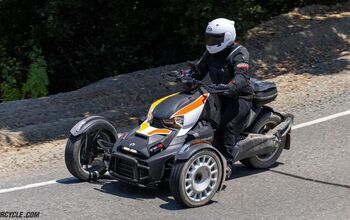









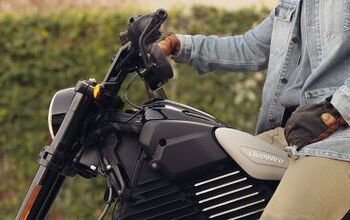
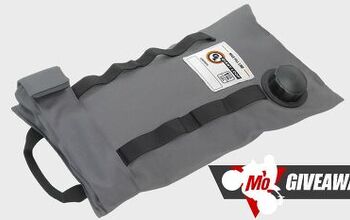
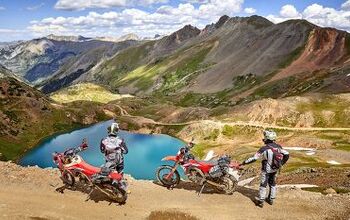
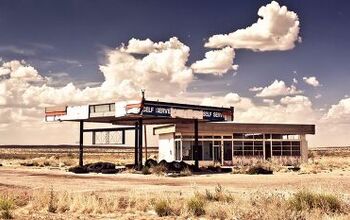
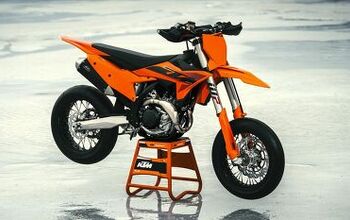



Comments
Join the conversation
What no ktm hater in the comments?
Glad that I will buy a Can-Am 3 wheeler anyway.